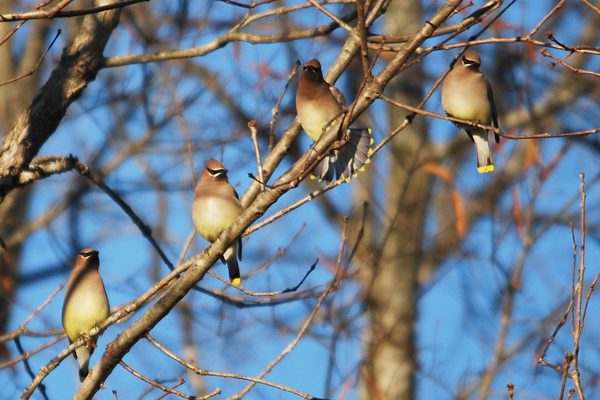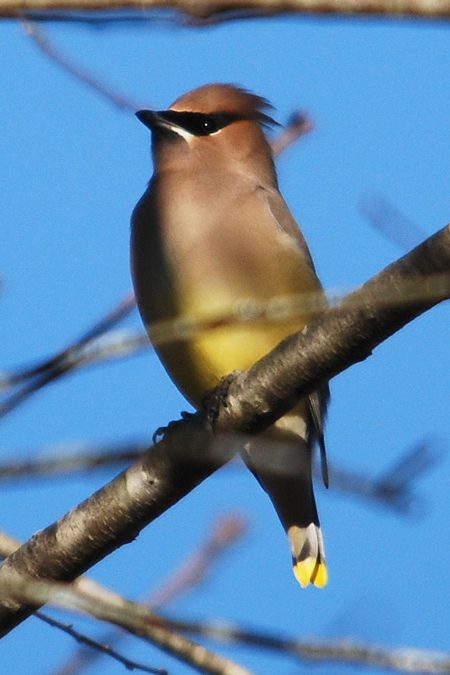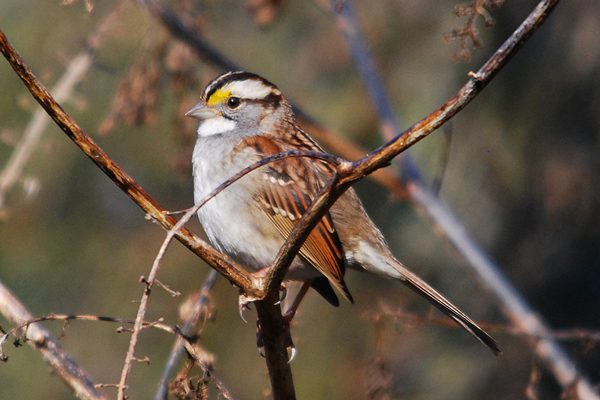Wintering in the Piedmont
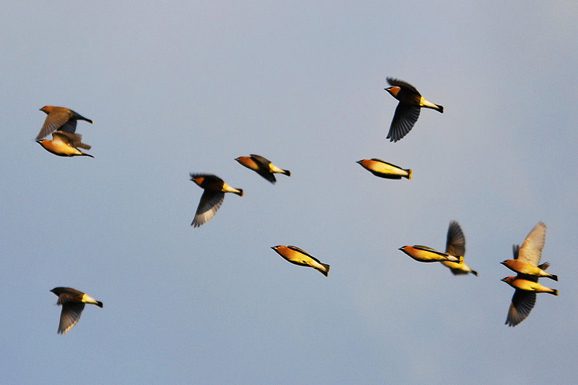
Many birds lead lifestyles of the rich and famous – they “summer” in one location and “winter” in another. After nesting in the United States, some birds depart for second homes in South America or the Caribbean. Others are content to travel no farther than the Uwharries in the N.C. Piedmont. Migration is a risky proposition. The weather and food supplies are usually more stable in the tropics, but the trip itself is taxing and treacherous. Plus, birds that stay closer to home might be better positioned to arrive first on their breeding grounds and claim the best territory.
|
The Great Backyard Bird Count is February 17-20. This event is sponsored by the National Audubon Society and the Cornell Lab of Ornithology. Participating in this event helps increase scientists’ understanding of birds. |
Several of our winter visitors graciously accept the Southern hospitality we offer at our feeders. Purple finches devour sunflower seeds, and flocks of gray and white juncos forage underneath. Insect-eaters like warblers and kinglets appreciate suet feeders. Yellow-rumped warblers are streaky gray-brown birds with pats of yellow on their sides, head and rump. A friend says folks in Alabama call them butter butts. Kinglets are tiny, olive-colored birds. Restless and bossy, they act as if they resent their diminutive status. The golden-crowned kinglet’s name is an apt description. It also has white wing bars and black and white stripes through the eye. The ruby-crowned kinglet has a white eye ring instead of stripes. You won’t see any red unless a male happens to erect the secret tuft of feathers on his head.
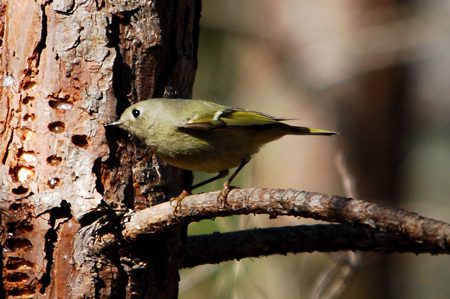 The hermit thrush is a small, brown bird with a creamy, speckled breast. They aren’t as reclusive as their name suggests, but their white eye ring gives them a startled appearance, and their habit of constantly pumping their cinnamon tail makes them seem a little nervous. Look for them on low branches or downed logs in our forests, near the ground where they can blend in with the leaf litter.
The hermit thrush is a small, brown bird with a creamy, speckled breast. They aren’t as reclusive as their name suggests, but their white eye ring gives them a startled appearance, and their habit of constantly pumping their cinnamon tail makes them seem a little nervous. Look for them on low branches or downed logs in our forests, near the ground where they can blend in with the leaf litter.
Flocks of cedar waxwings rove our farmyards and towns. Listen for their chorus of high, thin whistles. When they settle on a tree or shrub laden with their favorite berries – often a holly, cedar or ligustrum – they’re liable to stay put all afternoon until they wipe it clean. This provides ample opportunity to grab your binoculars and swoon over these elegant birds. Their tan and yellow feathers are as sleek as satin. They wear a rakish black mask and a bright yellow band across the tip of the tail. They look as though they brushed by a candle and dipped their wingtips into a puddle of thick, red wax.
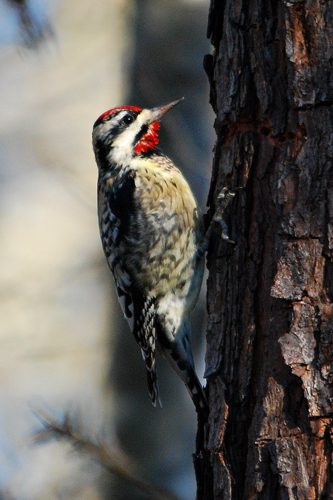 Whenever I talk about the yellow-bellied sapsucker, I always have the urge to pronounce its name with the highbrow, lockjaw accent of The Beverly Hillbillies’ favorite birder, Miss Jane Hathaway. In addition to a yellow wash on its belly, this small woodpecker has a red throat and prominent white patches on its wings. (The male also wears a red toupee.) This is the bird responsible for the distinctive grids of holes on tree trunks. They drill into living trees to release the sap, eating it with their bristle-tipped tongue and using it as a tool to trap insects. They seem to favor our pecans.
Whenever I talk about the yellow-bellied sapsucker, I always have the urge to pronounce its name with the highbrow, lockjaw accent of The Beverly Hillbillies’ favorite birder, Miss Jane Hathaway. In addition to a yellow wash on its belly, this small woodpecker has a red throat and prominent white patches on its wings. (The male also wears a red toupee.) This is the bird responsible for the distinctive grids of holes on tree trunks. They drill into living trees to release the sap, eating it with their bristle-tipped tongue and using it as a tool to trap insects. They seem to favor our pecans.
Sparrows are notoriously hard to identify by sight, but the white-throated sparrow’s namesake feature makes it unique. Its song is also distinct – a lonesome, mournful whistle, often represented as Old Sam Peabody, Peabody, Peabody. If Hank Williams had been a bird, he would have been a white-throated sparrow. It’s not a big leap to imagine this creature breaking into a version of Your Cheatin’ Heart.
If this inspires you to seek out these winter visitors (as well as our permanent residents), consider participating in the Great Backyard Bird Count (GBBC) this weekend, February 17-20. This event is sponsored by Audubon and the Cornell Lab of Ornithology. Birdwatchers have a long history of citizen science, conducting the annual Christmas Bird Count for over a century. Data collected over a number of years helps scientists see trends for a species in decline or the spread of a disease. It also helps them assess the abundance and diversity of species in urban, suburban, rural and natural settings. A winter bird count specifically addresses how weather might be affecting populations, including “irruptive” species that appear on an irregular basis such as pine siskins. I wish I’d participated in the GBBC the year a black-headed grosbeak wintered at my mom’s feeder. This accidental species from the West rarely strays to the Atlantic states.
The N.C. chapter of the National Audubon Society (Audubon North Carolina) is leading an on-going effort to document Important Bird Areas (IBAs) across the state. The IBA program highlights ecologically significant habitats and locations, guiding our conservation efforts and steering birders toward places to enjoy their pastime. The Uwharries haven’t yet earned this designation. We have some of the best habitat in the Piedmont, but very little documentation to “prove” it. To qualify, we need to collect and submit data on our local bird populations. The GBBC offers a great opportunity to get started.
*An earlier version of this article mistakenly referred to the golden-crowned kinglet as the orange-crowned kinglet.
All the photos in this story were supplied by Liz Odum of Richburg, S.C. All were taken in her yard, showing the variety of birds that can be seen in the Piedmont in winter. Scroll below for more shots from Liz’s yard.
For more information about the Great Backyard Bird Count, visit www.birdsource.org/gbbc/.
A copy of The Important Bird Areas (IBAs) of N.C. can be downloaded at http://ncaudubonblog.org/iba/.
To hear the song of the white-throated sparrow, go to http://www.allaboutbirds.org/guide/White-throated_Sparrow/id/ac.
For more information about the S.C. chapter of the National Audubon Society (Audubon South Carolina) visit http://sc.audubon.org/index.html. Information on IBA work in S.C. is available at http://sc.audubon.org/Birds_IBAs.html.
More photos from Liz Odum:
